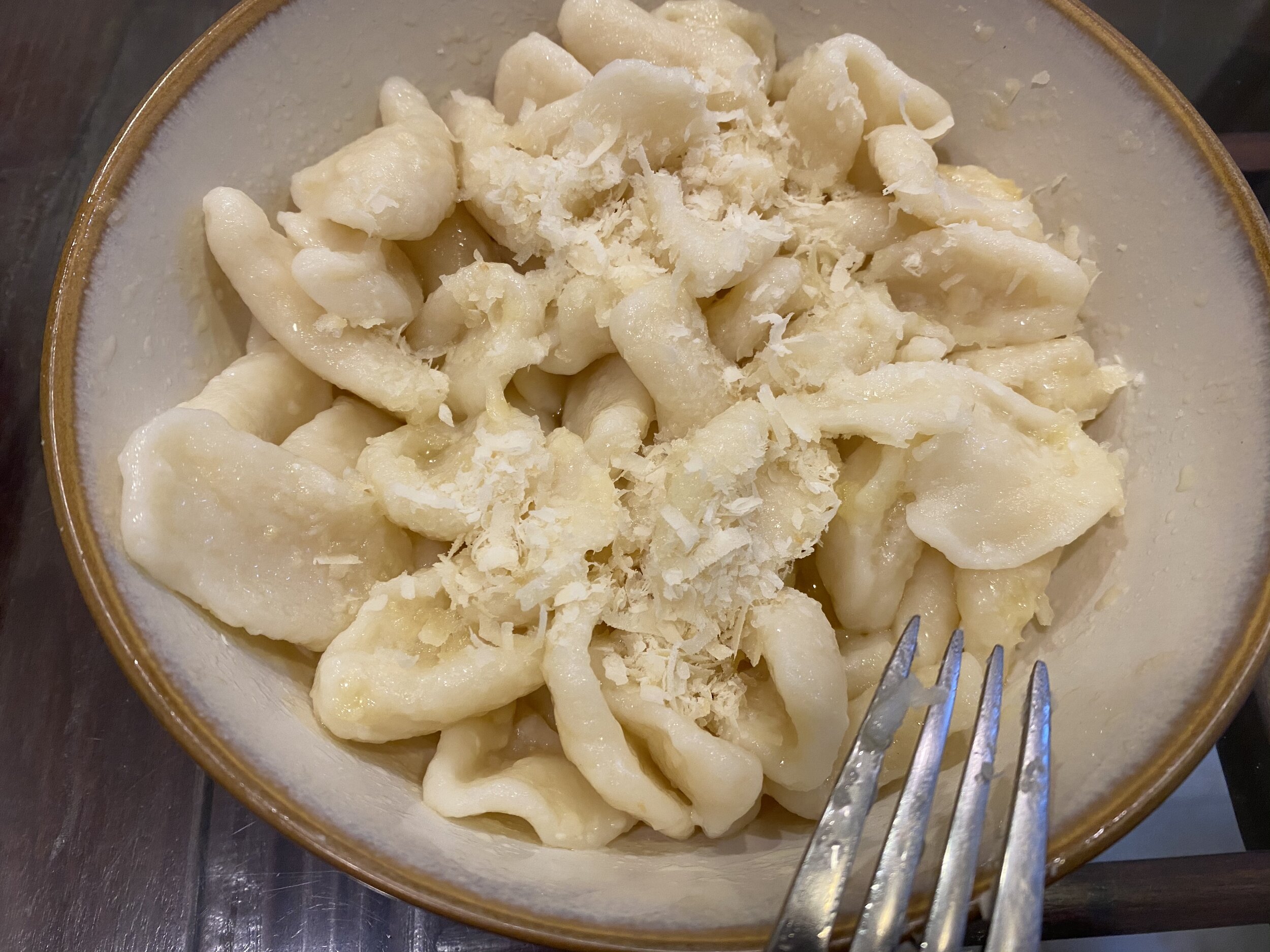I’ve been locked in my house in Beijing for the last seven days, and we have seven more days to go! Everyone who arrives in China is subject to an enforced 14 day quarantine in their home. And this isn’t American-style quarantine — we literally can’t leave our front door or even step into our backyard.
I haven’t been cooking a lot. Fortunately, ordering takeout from virtually any restaurant is super easy, fast, and inexpensive — which has been a total luxury after cooking almost every night for 6 months.
But I broke out my apron the other day for a private cooking class for some of my husband’s colleagues and their family members. Like us, they’re all in quarantine too, trapped in the house with their kids, so the purpose of the class was to make something fun with the fewest ingredients possible. Noodles sounded like the right call. All that’s required is flour, water, and a rolling pin — or a wine bottle in a pinch.
The class was a bit of a disaster (I’ll tell you why next week, see my post about quarantine under “Stories”) but the ones who managed to follow along and my kids were very happy with the results: chewy ear-shaped pasta. We doused ours with butter and sprinkled it with grated super-aged Parmigiano-Reggiano (it’s been sitting in our fridge for the entire time we’ve been away from China).
Chinese noodles have a lot in common with Italian pasta — so much so that I wrote a whole book on the subject. When I resume online cooking classes in September, I plan to team up with my chef friend Andrea in Rome to offer a noodle/pasta class … stay tuned!
Ideally, this recipe should be done with two or more people, to divide the work of shaping the dough, but if you’re on your own, love pasta, and have the patience, this activity can feel pretty meditative. Either way, you’ll have something yummy to show for when you’re done.
Homemade "Cat's Ear" Noodles
4 cups all-purpose flour
2 cups water
Make the dough
Heap the flour in a large bowl or a flat work surface. Make a well in the center.
Pour 1 cup of water into the well and work it into the flour, mixing with your hands. Slowly add more water, about ¼ cup at a time, mixing thoroughly until all the flour has been incorporated and the dough is soft and pliable. You can also do this with a KitchenAid or hand mixer, using the dough hook. Once the dough comes together, it should be tacky to the touch but should not stick to your fingers. If it’s too wet, add more flour.
Knead the dough for 3 to 5 minutes, then cover with a damp cloth and let sit for at least 30 minutes. While you’re waiting, you can read the recipe for another of my favorite noodle dishes, have a drink, or read about my pasta adventures.
Roll out the dough
Dust the work surface with flour. Break off about an eighth of the dough to work with, leaving the rest under the damp cloth. Knead the dough for a couple of minutes and shape it into a long rope, rolling it until it’s about the thickness of your index finger. With a butter knife, cut the dough into little pieces about 1/4-inch long. Rub a little flour on your thumb. Working with one little piece of dough at a time, press your thumb into the dough and roll it from one side of your thumb to the other. (Your thumb will essentially serve as a mold, and the dough should form a concave shape against your thumb.) Repeat until all your dough is shaped into these ear-like shells. Place the noodles on a lightly floured surface and make sure to space them out (think social distancing, pasta style) so they don’t stick together.
Cook the noodles
Boil the noodles in a large pot for 3-4 minutes; drain and run under cool water. Toss with your favorite sauce.
